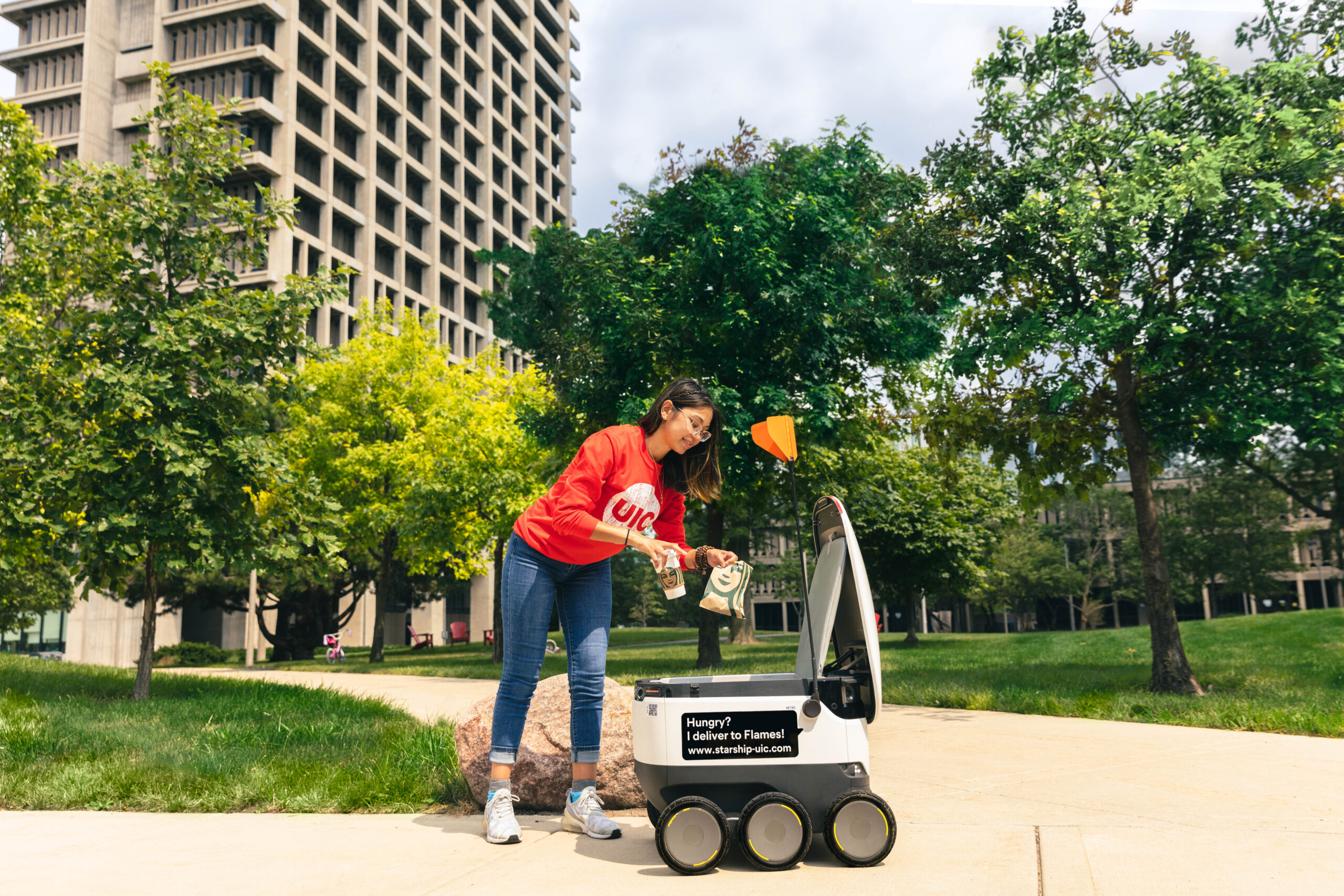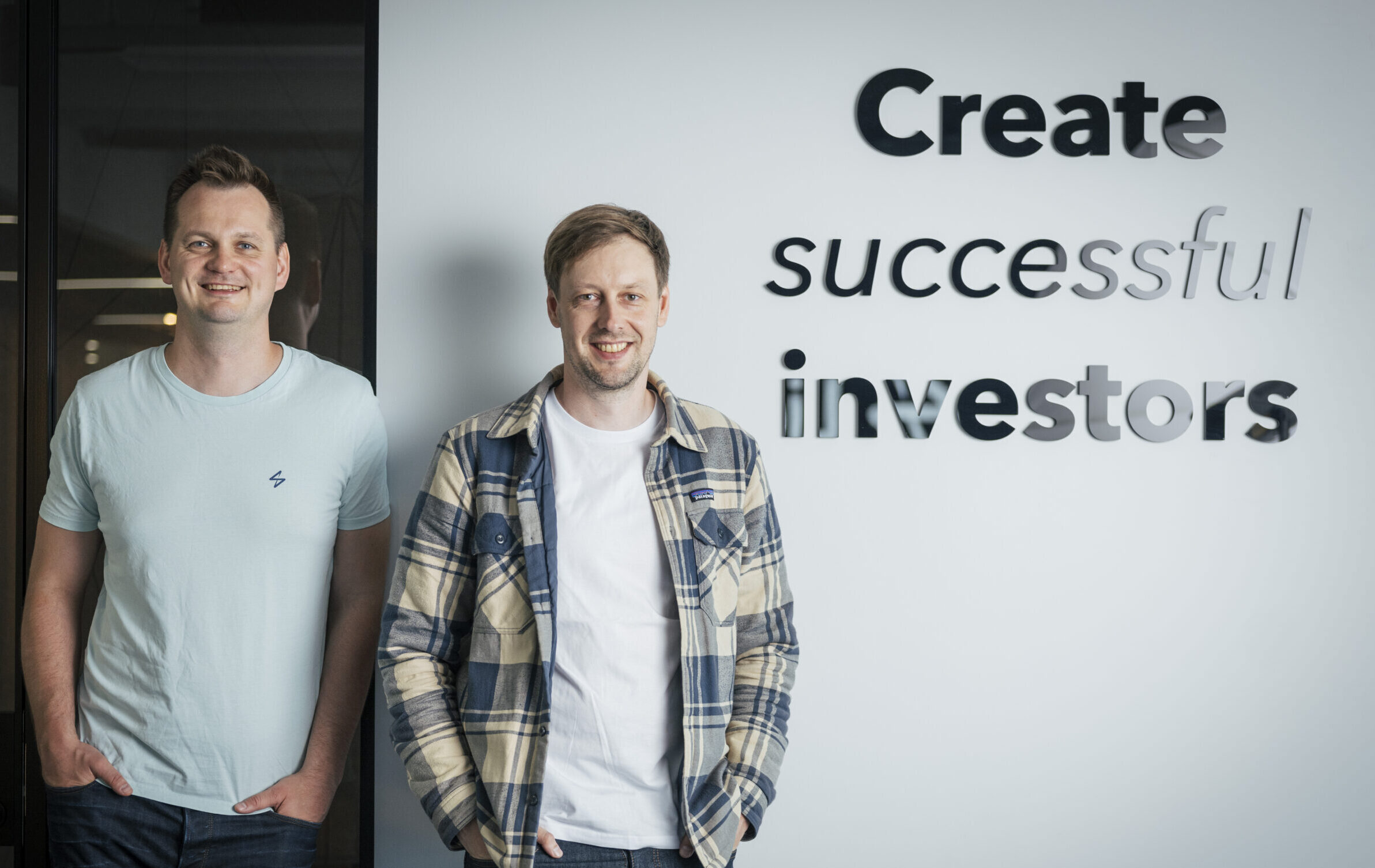An interview with Starship CEO Alastair Westgarth and CTO & co-founder Ahti Heinla.
Last mile delivery is a bottleneck in (sub)urban areas, both economically as well as physically (traffic congestion, availability of couriers). How are autonomous deliveries helping to reshape the last mile of the supply chain?
The rapid growth and scale of the autonomous delivery industry in reshaping last-mile delivery is unquestionable. Indeed, the autonomous delivery robot market is expected to reach $55bn by 2026, according to a recent forecast from Facts & Factors.
The benefits of bringing convenience and ease to the end customer are clear, and there are also significant environmental advantages in reducing congestion and emissions. We expect to see demand for autonomous delivery to continue to grow in cities, local neighbourhoods and suburbs, where traditionally the costs associated with last mile delivery have been higher than in more densely populated city centres.
This is an area Starship has been addressing for the last four years, providing a cost effective and environmentally friendly on demand delivery service to people in Milton Keynes and Northampton in the UK, Tallinn, Estonia, and Modesto and Pleasanton in California.
While we expect that last-mile delivery will continue to evolve and be multi-modal, it is clearly easier and makes much more sense to provide delivery to someone within 30 minutes or less in a 3-5km radius using the pavement rather than by the road or air where the safety requirements and regulations are much more complex.
How far are we from a world where autonomous deliveries are cheaper than the human equivalent?
We are confident that we’ve already reached this point. Starship is currently achieving delivery costs that are now lower than the human equivalent, which is believed to be a world first for any robot delivery company, whereas most others are still majority human controlled and in pilot mode.
This shift is crucial because clearly the demand for contactless deliveries is here to stay as we start to emerge from the pandemic. More and more people want same-day or quick delivery, which is fuelling the demand for autonomous delivery services.
We firmly believe that fast, short distance, low-medium basket value deliveries cannot be done sustainably by people moving forward. Workers are too often overworked and poorly treated, as well as facing challenges around pay and employment rights.
The only way to deliver on-demand goods sustainably and consistently at low cost in our view is by using autonomous robots, helping people to work in better conditions and other areas within the wider industry.
How many cities, towns, and university campuses is Starship operating in today?
Starship is delivering a fully commercial service operating 24-7 across five different countries (UK, US, Estonia, Germany and Denmark) and 33 different sites. This is a significant differential for Starship, as most other companies in the autonomous delivery market are only doing pilots/trials and/or require a human operator to accompany their robots.
Starship’s business model is different depending on the geographies the service is operating in, with the company providing delivery services in three main environments: local neighbourhoods, college/university campuses and industrial campuses.
The local neighbourhood offering (such as in Milton Keynes and Northampton in the UK, Tallinn, Estonia, and Modesto and Pleasanton in California) sees the robots deliver groceries to nearby communities. The college/university campus offering sees the robots deliver food, drink and other items such as stationery to employees and students on over 20 US campuses currently; while the robots also operate on industrial campuses in Germany, including support for operations such as automotive factories, pharmaceutical companies, and hospitals.
Our recent Series B funding will help Starship further scale its service and meet increasing demand for its autonomous delivery service by launching in new cities in North America and Europe, including tens of university campuses in the US.

How does Starship help to reduce the carbon footprint of deliveries, compared to conventional methods?
With it estimated that 25% of CO2 emissions and 30-50% of other pollutants are caused by urban freight transported by diesel-powered trucks and vans, it’s clear that alternative methods of delivery are needed to reduce congestion and harmful emissions in the last-mile.
Each of Starship’s robots can take 10 cars off the road (based on one robot doing 10 deliveries per day) on average, while an average delivery for a Starship robot consumes as little energy as boiling the kettle to make just one cup of tea.
We also recently conducted a study in collaboration with Milton Keynes Council to explore the environmental impact of the robots being in the city since 2018. The findings showed that more than 280,000 car journeys have been avoided as a result of the robots operating, equating to over 500,000 miles. As a result, this has seen 137 tons of CO2 and 22kg of NOx saved, with a reduction of 23kg of PM10 and 12kg of PM2.5 in the volume of micro-particles in the air.
Other research we have conducted recently has revealed that close to 70% of Starship’s customers forgo driving to a store or receiving a delivery from a fuel powered vehicle in favour of robot delivery.
How does Artificial Intelligence, AI, help to improve Starship deliveries? What other delivery tasks can be automated more in the future?
There are a number of advanced technologies, including AI that form the foundation for how a Starship robot navigates from point A to point B. The start of this is using satellite imagery to help them plan a journey, while a routing algorithm is then applied to identify the shortest and safest path for the robot to take.
This is very important, because the shortest route in terms of distance might not actually be the quickest route. Starship’s robots determine the latter by attaching a ‘cost’ to each potential scenario that it could encounter while out making a delivery.
In order to learn this behaviour, the robots use machine learning tools that can divide maps into a series of interconnected lines to illustrate pavements/sidewalks, road crossings and driveways etc.
Then, when they are out and about in the ‘real world’ making deliveries, the robots use a combination of sensors, AI and machine learning to safely navigate around any obstacles, while computer vision-based navigation helps them map their environment to the nearest inch.
Ahti, what are some of the more difficult challenges Starship has overcome that every company considering entering this market will also have to solve?
The biggest challenge we have overcome that most others in the industry are still battling with is to scale and get to the stage of offering a fully commercial service. The reality is that despite claims to the contrary, most companies in this space are still majority human controlled and in pilot/trial/testing mode.
There is no substitute for having robots in the field making commercial deliveries and becoming smarter with every delivery made. Our robots make more than 140,000 road crossings every day around the world (that’s around 3 every second), using a combination of sensors, artificial intelligence and machine learning to safely navigate around obstacles. Computer vision-based navigation helps them map their environment to the nearest inch. This level of sophistication cannot be achieved overnight; it is something we have refined and developed over many years at Starship since defining and creating the robot delivery category in 2014.
To illustrate the scale of growth we’re talking about, it took around a year since starting commercial operations for Starship to complete 50,000 deliveries, but only four more months to double to 100,000, and as of today Starship has completed three million commercial deliveries. We have also reached nearly four years of L4 autonomous deliveries, with Starship robots completing a large number of deliveries in a row 100% autonomously every day, including road crossings.
Alastair, since you joined as CEO, what has been the most surprising thing about Starship you didn’t know before joining?
I wouldn’t say this is something I didn’t know, but I have been pleasantly surprised by the overwhelming degree to which people around the world are so comfortable being around the robots and that on the whole they completely ignore them the majority of the time.
It’s of course very important that people feel comfortable around autonomous vehicles, and at Starship we work very closely with local, state and national governments to ensure we are providing a safe and effective service.
I’ve already seen in my time at the company how truly integrated Starship’s robots have become in local communities and on campuses. As mentioned, most people don’t react to them and those who do often comment on how ‘cute’ they are. Children (and frequently adults too) will go to greet them when they arrive with a delivery, draw pictures of them, write and put thank you notes inside them and take ‘selfies’ with them.
This is testament to the various learnings that we have applied over the years to try and ensure that the service continues to benefit as many people as possible and that the robots co-exist within the environments they operate in.
What kind of job positions is Starship looking to fill this year, and where?
Our Series B funding and recent EIB financing will help bolster our research and development capabilities, including the building of thousands more robots at Starship’s manufacturing, engineering and innovation facility in Tallinn, Estonia, and we will be hiring additional engineering resources to make this possible. Additionally, we plan to double the size of our operations in Finland this year, having already done so last year as well. We’re looking for many business professionals, engineers, technicians and software developers across multiple countries in Europe and around the world right now.
You can find more about Starship from our investment announcement (1st March) and our portfolio page.


